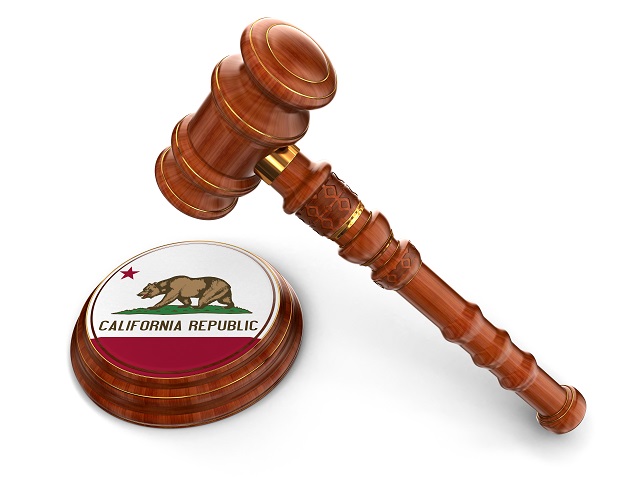
As you may know, the Fair Labor Standards Act (FLSA) requires that non-discretionary bonuses are included in an employee’s regular rate of pay for overtime purposes. As a reminder, non-discretionary bonuses are: dependent on an employee’s hours worked or on the quality or quantity of the outcome of the employee’s work, determined through the employee’s service or his or her productivity or efficiency, predetermined by specific criteria, and employees know how to earn it.
Back in March of this year, the California Supreme Court unanimously ruled in favor of employees regarding the calculation of a flat sum non-discretionary bonus during a single pay period. In order to appreciate the impact of this decision, an understanding of a few basic concepts should be had. A flat-sum bonus is a bonus set at a set rate regardless of the amount of time that an employee has worked. To make these calculations, the regular rate of pay must be calculated first. While this amount can change in each pay period, the regular rate of pay includes the hourly rate of pay, non-discretionary bonuses, and any other specific types of compensation that the employee may earn.
In addition, there is a baseline of general requirements for overtime in California. For instance, employers in California must pay a rate of 1.5 times the regular rate of pay for non-exempt employees if they have worked over 40 hours in one work week, have worked over eight hours in one workday, or have worked eight hours on the seventh consecutive workday in the same workweek. On top of that, California employers are required to pay non-exempt employees twice their regular rate of pay for any time over twelve hours worked in a workday or if an employee has worked over eight hours on the seventh consecutive workday in the same workweek.
In this recent ruling, the Supreme Court specifically ruled to adopt the California Division of Labor Standards Enforcement (DLSE) formula, which allows a flat-sum bonus to be divided only by non-overtime hours worked in order to calculate the regular rate of pay. As a result, the regular rate of pay amount would be larger than the amount calculated under the FLSA, which includes overtime hours in the calculation as well. The main differences regarding the FLSA and the California DLSE formulas are more clearly demonstrated via the calculation examples in the matrix below.
|
|
|
|
Fair Labor Standards Act (FLSA) Formula |
California Division of Labor Standard Enforcement (DLSE) Formula |
|
First: Straight-time compensation is made up of the straight-time hourly wages for all hours of work plus any bonuses.
($14 hourly rate x 50 hours worked) + $200 bonus = $900 |
First: The flat-sum bonus should be divided by the number of non-overtime hours that have been worked.
$200 divided by 40 hours = $5.00 per-hour bonus |
|
Second: Divide that amount by the total number of hours worked. This is the regular rate of pay.
$900 straight-time pay divided by 50 hours worked = $18 |
Second: Multiply that number by 1.5; also multiply the hourly wage by 1.5. Add those totals together. This is the overtime pay rate.
$5.00 x 1.5 = $7.50
$14 x 1.5 = $21
$7.50 + $21 = $28.50 (new overtime rate) |
|
Third: Multiple the regular rate of pay by .5, then multiply that by the total number of overtime hours.
$18 x .5 x 10 overtime hours = $90 |
Third: Multiply the overtime pay rate by the total number of overtime hours.
$28.50 x 10 overtime hours = $285.00 in overtime compensation owed for hours 41-50 |
|
Fourth: Calculate the total compensation amount.
$90 overtime pay + $900 straight-time pay = $990 |
Fourth: Calculate hourly wages, bonuses, and overtime compensation to achieve total compensation.
$560 in hourly wages for hours 1-40 ($14 x 40 hours) + $200 bonus + $285.00 in overtime compensation for hours 41-50 = $1045.00 in total compensation |
You should consult with legal counsel to help you determine whether or not this ruling affects any bonuses that you provide your employees. While the above may seem confusing, a discussion with your legal counsel can ease any additional concerns that you may have regarding how this new ruling may affect your practice.
Frequently Asked Questions
Q: What is a non-discretionary bonus?
A: A non-discretionary bonus is dependent on an employee’s hours worked or on the quality or quantity of the outcome of their work. It is predetermined by specific criteria, and employees know how to earn it based on their service, productivity, or efficiency.
Q: How does the Fair Labor Standards Act (FLSA) treat non-discretionary bonuses for overtime calculation?
A: The FLSA requires that non-discretionary bonuses be included in an employee’s regular rate of pay for overtime purposes. The regular rate of pay is calculated by dividing straight-time compensation (hourly wages and bonuses) by total hours worked, including overtime hours.
Q: What was the recent ruling by the California Supreme Court regarding non-discretionary bonuses?
A: The California Supreme Court ruled that for calculating a flat-sum non-discretionary bonus during a single pay period, the bonus should be divided only by non-overtime hours worked to determine the regular rate of pay, as per the California Division of Labor Standards Enforcement (DLSE) formula.
Q: How does the California DLSE formula differ from the FLSA formula in calculating overtime pay?
A: Under the DLSE formula, the flat-sum bonus is divided only by non-overtime hours worked, resulting in a higher regular rate of pay than under the FLSA, which includes overtime hours in the calculation. This leads to a higher overtime pay rate.
Q: What are the overtime pay requirements in California?
A: In California, employers must pay 1.5 times the regular rate of pay for non-exempt employees who work over 40 hours in a workweek, over eight hours in a workday, or eight hours on the seventh consecutive workday in a workweek. Employers must pay twice the regular rate for time worked over twelve hours in a workday or over eight hours on the seventh consecutive workday in a workweek.
Q: How should employers calculate overtime pay under the California DLSE formula?
A: Employers should first calculate the per-hour bonus by dividing the flat-sum bonus by non-overtime hours. Then, multiply this per-hour bonus and the hourly wage by 1.5, and add them to determine the new overtime rate. Multiply this overtime rate by the total overtime hours worked to find the overtime compensation owed.
Q: How does this ruling affect employers providing bonuses?
A: Employers need to adjust their bonus calculation methods to comply with the California Supreme Court's ruling. Consulting with legal counsel is recommended to ensure compliance and to address any concerns regarding how the ruling may impact their practices.
At Dental & Medical Counsel, we've been instrumental in realizing the practice goals of countless dentists. Whether you're looking to purchase, launch, or sell a dental practice, our expertise is your guide. Beyond the initial stages, we're committed to ensuring your dental practice remains legally compliant.
We provide comprehensive support, including employment law protections, dental contract reviews, and assistance with dental employment agreements. Additionally, we specialize in incorporating dental practices and securing trademarks. And for long-term planning, our services extend to helping dentists with succession and estate planning. Trust us to be your partner in every step of your dental practice journey.
.jpg?width=300&height=396&name=Ali%20Website%201_edited%20(1).jpg)
About Ali Oromchian, Esq.
Your Dental Lawyer
Ali Oromchian, JD, LL.M., is a leading legal authority in dental law and the founding attorney of Dental & Medical Counsel, PC, with over two decades of experience. His deep connection to dentistry comes from his wife's nearly two-decade-long career as a pediatric dentist.
This personal insight fuels his dedication to empowering dentists to navigate their legal challenges and achieve their practice goals. In doing so, Ali has helped thousands of doctors open their practices while maintaining legal compliance.
Ali is frequently quoted and contributes articles to dental publications, including the California Dental Society, Progressive Dentist, Progressive Orthodontists, Dentistry Today, Dentaltown, and The New Dentist magazines, further showcasing his commitment to the dental community.

Stay updated with industry news!
1904 Olympic Blvd, Suite 240
Walnut Creek, CA 94596
Phone: 925-999-8200
Fax: 925-884-1725
frontdesk@dmcounsel.com
| Monday | 8:00AM - 6:00PM |
| Tuesday | 8:00AM - 6:00PM |
| Wednesday | 8:00AM - 6:00PM |
| Thursday | 8:00AM - 6:00PM |
| Friday | 8:00AM - 6:00PM |
| Saturday | Closed |
| Sunday | Closed |